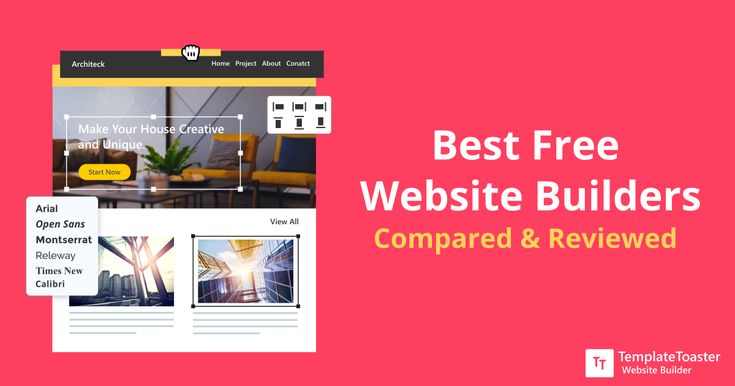In today’s digital age, having a website is essential for businesses of all sizes. However, not everyone has the budget to hire a professional developer. This is where free website builders come in handy. These platforms offer easy-to-use tools that eliminate the need for coding skills, making website creation accessible to everyone.
With the advancement of artificial intelligence (AI), building a website has become even more streamlined and efficient. During my thorough testing of various free website builders, I discovered the top eight options that stand out in terms of usability, features, and design capabilities.
From intuitive drag-and-drop interfaces to customizable templates, these free website builders empower individuals and small businesses to create stunning websites without spending a dime. Whether you’re starting a blog, showcasing your portfolio, or launching an online store, these platforms offer the tools you need to bring your vision to life. So, why wait? Dive into website creation with one of the best free builders available in 2024 and establish your online presence today.
The best free website builders
- Google Sites for basic sites (without SEO)
- Yola for simple, no-fuss websites
- GetResponse for email-focused businesses
- Wix for an all-around site builder
- Dorik for more experienced creators
- HubSpot CMS for growing businesses
- Webflow for advanced designers
- Webnode for the best AI features
What makes a great free website builder?
What sets this list apart from others is the meticulous hands-on approach taken to curate it. Instead of relying solely on reviews or marketing materials, extensive research was conducted to identify the free website builders that users genuinely adore. Hours were dedicated to testing each platform firsthand, delving into their templates, AI builders, SEO features, and design elements.
As someone experienced with WordPress and Squarespace, I was particularly intrigued to see how these contenders compared. From signing up to crafting sites using their templates or AI tools, every aspect was scrutinized, including ease of use and the value offered by their free plans. Builders requiring additional purchases for hosting were excluded, as were those deemed too complex or lacking in free plan benefits.
Ultimately, only the cream of the crop cut, catering to a spectrum of needs—from effortless site creation for novices to robust solutions suitable for commercial ventures. Whether it’s AI-powered functionality or user-friendly interfaces, each inclusion was thoroughly assessed to ensure it met the mark.
Several factors contribute to making a great free website builder:
- Ease of Use: A user-friendly interface with intuitive drag-and-drop tools makes it easy for beginners to create and customize their websites without any coding knowledge.
- Templates and Design Flexibility: Access to a wide range of professionally designed templates and the ability to customize them to match your brand’s identity ensures your website stands out and reflects your unique style.
- Feature Set: Essential features such as mobile responsiveness, SEO optimization, and integrations with third-party tools enhance the functionality and performance of your website.
- Scalability: While starting with a free plan, the option to upgrade to premium plans with advanced features and increased storage or bandwidth allows your website to grow along with your business needs.
- Customer Support: Responsive customer support channels, comprehensive documentation, and community forums provide assistance and guidance whenever you encounter issues or have questions during the website-building process.
- No Hidden Costs: Transparent pricing and a clear understanding of what features are included in the free plan, as well as any limitations or restrictions, help users make informed decisions without unexpected expenses.
- Reliability and Security: A reliable hosting infrastructure with robust security measures ensures your website remains accessible and protected against cyber threats, providing peace of mind to both you and your visitors.
The best free website builders at a glance
| Best for | Standout feature | Great; you can add your domain and manage up to 1,000 newsletter contacts for free | |
| Google Sites | Basic sites (without SEO) | Easy to use (like Google Docs) | Limited, but plenty for beginners and those who don’t need SEO |
| Yola | Simple, no-fuss websites | Extensive and relevant block library | Good, but worth paying to remove ads/branding |
| GetResponse | Email-focused businesses | Lots of templates | Great; you can add your own domain and manage up to 1,000 newsletter contacts for free |
| Wix | An all-around site builder | Easy-to-use AI builder | Excellent; includes most features to some degree with the free plan |
| Dorik | More experienced creators | Includes an AI image generator | Excellent; includes unlimited page views, storage, premium templates and blocks, SSL (HTTPS) certificate, global CDN, image optimization, SEO settings, integrations |
| HubSpot CMS | Growing businesses | Step-by-step plan to get started | Great, but worth upgrading to remove the HubSpot logo and use a custom domain |
| Webflow | Advanced designers | Extensive customization options | Excllent; access to all features, up to 50 CMS items, 1 GB of bandwidth, and a webflow.io domain |
| Webnode | Building a website with AI | Excellent; access to all features, up to 50 CMS items, 1 GB of bandwidth, and a webflow.io domain | Great; 150+ templates and AI functionality to get started, but worth updating to remove branding and use a custom domain |
Best free website builder for basic sites (without SEO)
Google Sites
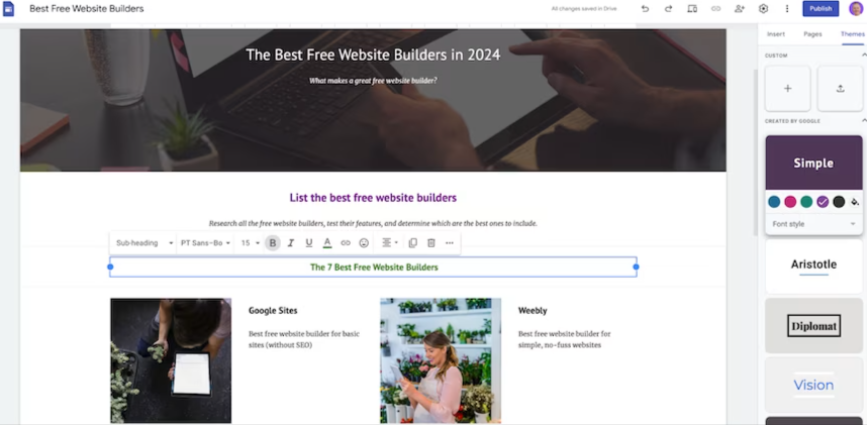
Pros:
- Easy to use, similar to Google Docs.
- Free with no paid plans.
Cons:
- Limited customization options.
- No SEO tools were provided.
Google Sites offers a user-friendly approach to website building, resembling the intuitive interface of Google’s productivity tools like Docs. With its simple drag-and-drop functionality, users can quickly create and edit pages without prior experience in web design or coding. While it lacks extensive customization options and built-in SEO tools, its straightforwardness makes it ideal for those seeking simplicity and ease of use.
However, the platform’s limited flexibility in templates and themes may be restrictive for users requiring more advanced customization. Additionally, the absence of built-in SEO tools could pose challenges for optimizing the site’s visibility in search engine rankings. Despite these limitations, Google Sites remains a suitable choice for creating basic websites or internal documentation, catering well to users prioritizing ease of use over advanced features.
- Google Sites pricing: 100% free; no paid plans.
Yola
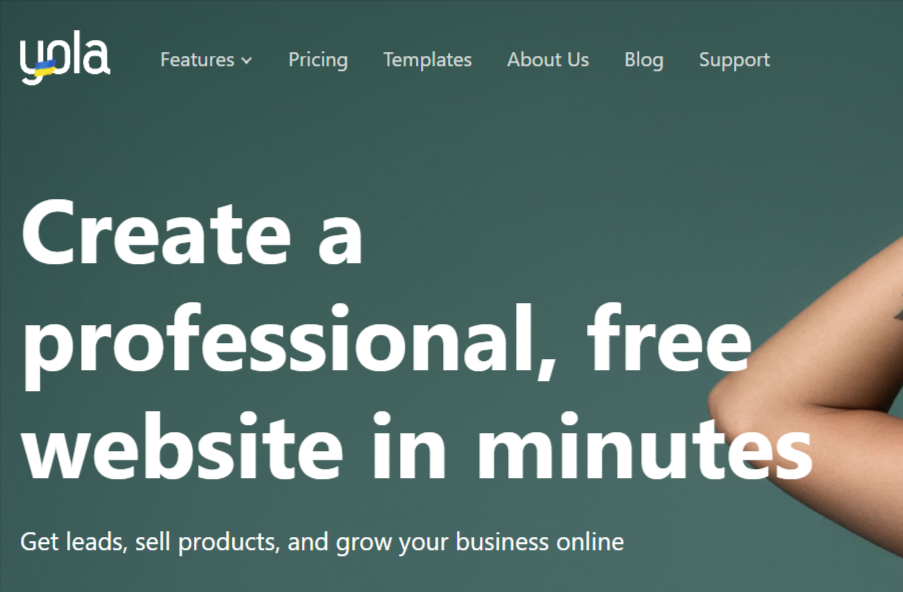
Pros:
- Intuitive editor for easy site creation.
- Free plan available; paid plans start at $6/month.
Cons:
- Limited SEO tools.
- Some customization features require upgrades.
Yola stands out for its user-friendly interface and diverse selection of templates, catering to users aiming to create straightforward websites without grappling with complex design tools. The platform’s intuitive drag-and-drop editor allows users to easily customize their site’s layout and content, even for those with limited technical expertise. Additionally, Yola’s free plan offers good value, providing essential features for building and launching a website at no cost.
However, users seeking advanced SEO features may find the free plan somewhat limiting. While basic SEO capabilities such as adding meta descriptions and titles are available, accessing more advanced SEO tools and customization options may require upgrading to a paid plan. Despite this limitation, Yola remains an excellent choice for individuals and small businesses looking to establish an online presence quickly and effortlessly, thanks to its user-friendly interface and accessible templates.
- Yola pricing: Free plan available; paid plans start at $6/month (billed annually)
GetResponse
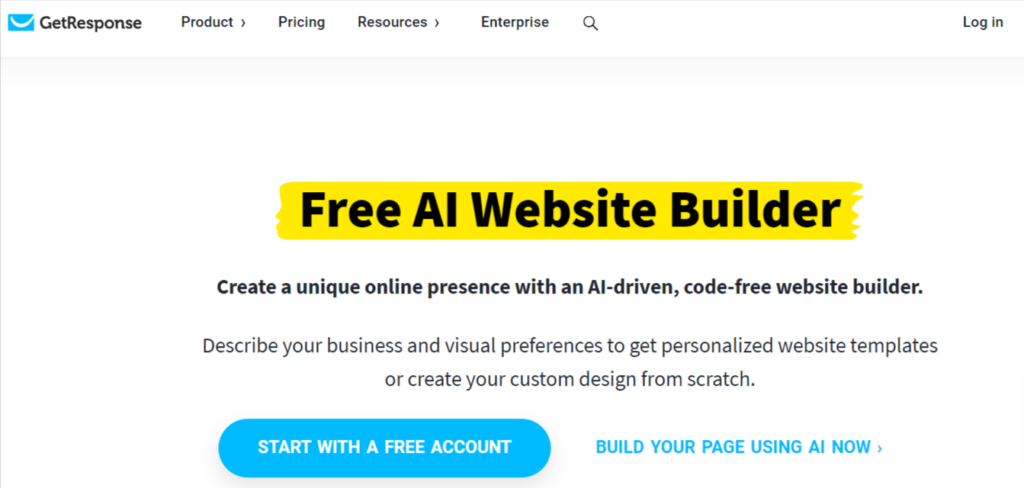
Pros:
- Intuitive editor with drag-and-drop features.
- Free plan available; paid plans start at $15.58/month.
Cons:
- Limited SEO tools.
- Some features may require upgrading for full functionality.
GetResponse distinguishes itself with its intuitive interface and comprehensive email-focused features, making it an ideal choice for businesses prioritizing email marketing efforts. The platform’s user-friendly design allows users to easily navigate and utilize its range of tools for creating and managing email campaigns. Additionally, GetResponse’s free plan offers substantial value by enabling users to build and launch websites seamlessly while also managing up to 1,000 contacts at no cost.
One of the key advantages of GetResponse’s free plan is its ability to empower users to establish their online presence and engage with their audience effectively without incurring additional expenses. From designing visually appealing websites to managing subscriber lists and sending targeted email campaigns, GetResponse provides essential features for businesses looking to grow their online presence without breaking the bank. With its intuitive interface and robust email marketing capabilities, GetResponse offers a compelling solution for businesses seeking to optimize their digital marketing efforts while staying within budget.
- GetResponse pricing: Free plan available; paid plans start at $15.58/month (billed annually).
Wix
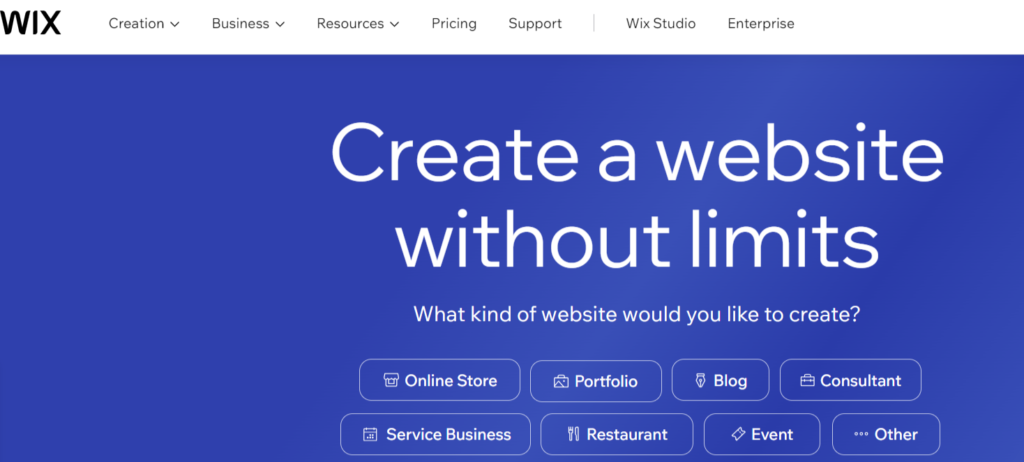
Pros:
- Easy-to-use drag-and-drop editor.
- Free plan available; paid plans start at $17/month.
Cons:
- Some features may overwhelm beginners.
- The free plan includes Wix branding.
Wix stands out as a versatile platform that accommodates users of all skill levels, from beginners to experienced designers. With its intuitive drag-and-drop editor and extensive library of templates and design elements, Wix empowers users to create stunning websites with ease. The platform’s free plan offers excellent value by providing access to essential features for building and customizing websites without any upfront costs.
However, while Wix’s free plan is robust, users may encounter limitations in terms of advanced features and branding. Upgrading to a premium plan unlocks access to a wider range of functionalities, such as eCommerce capabilities, advanced SEO tools, and the ability to remove Wix branding from their sites. Despite these potential limitations, Wix remains a top choice for individuals and businesses looking to establish a professional online presence without investing significant resources. Its user-friendly interface and extensive feature set make it an attractive option for anyone seeking to create a visually appealing and functional website.
- Wix pricing: Free plan available; paid plans start at $17/month.
Dorik
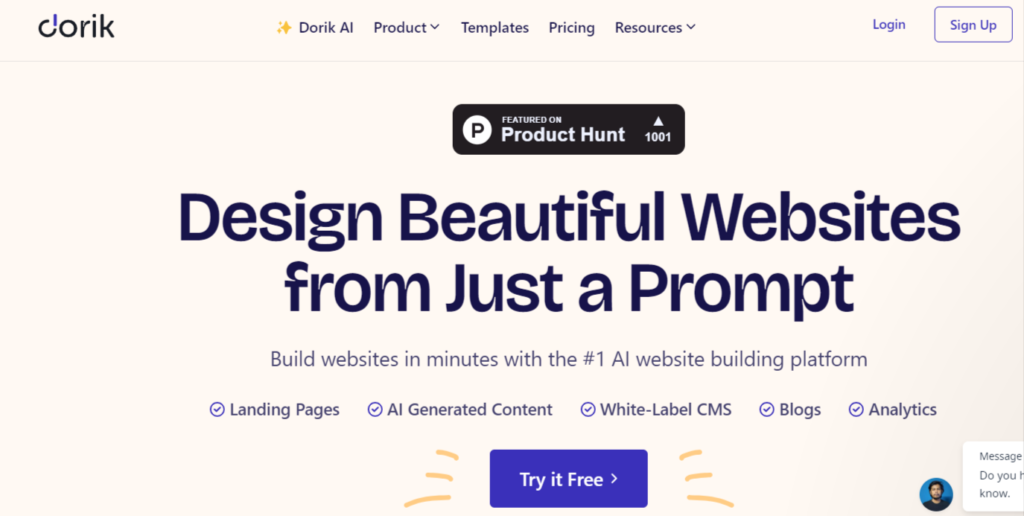
Pros:
- Easy drag-and-drop editor with extensive customization options.
- Free plan available; paid plans start at $15/month.
Cons:
- The learning curve for beginners.
- Some features may require technical knowledge.
Dorik stands out as a comprehensive platform that empowers experienced creatives to build highly customizable websites tailored to their unique vision. With its intuitive drag-and-drop editor and extensive library of templates, UI blocks, and elements, Dorik offers users unparalleled flexibility in designing their sites. The platform’s free plan provides access to a wealth of premium features, including unlimited page views, storage, SSL certificates, and image optimization, making it an attractive option for growing businesses seeking to establish a strong online presence without breaking the bank.
Despite its robust feature set, Dorik may pose a learning curve for beginners due to its advanced customization options. However, with comprehensive online documentation and support resources available, users can quickly familiarize themselves with the platform and unleash their creativity. Whether building a personal portfolio, an eCommerce store, or a corporate website, Dorik offers the tools and capabilities needed to bring any digital vision to life. Its combination of flexibility, functionality, and value makes it a top choice for experienced designers and businesses looking to elevate their online presence.
- Dorik pricing: Free plan available; paid plans start at $15/month (billed annually).
HubSpot CMS Hub
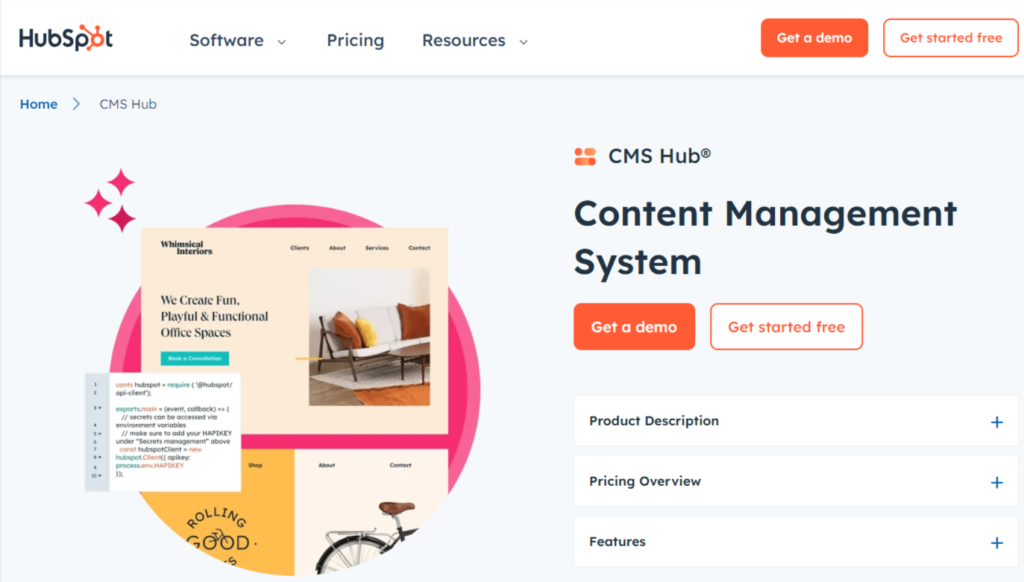
Pros:
- Easy-to-use interface with guided prompts.
- Free plan available; paid plans start at $15/month.
Cons:
- The free plan includes HubSpot branding.
- Some advanced features may require upgrading.
HubSpot CMS Hub provides a user-friendly environment for website creation, offering intuitive tools and features tailored to both beginners and experienced users. With its built-in SEO recommendations, users can optimize their content for search engines, enhancing their site’s visibility and driving organic traffic. Additionally, HubSpot CMS Hub offers a wide range of customization options, allowing users to personalize their websites to match their brand identity and objectives.
While the free plan offers substantial value, businesses looking for additional branding options and advanced features may choose to upgrade to a paid plan. These premium plans provide access to enhanced customization capabilities, including the ability to remove HubSpot branding and use a custom domain for a more professional appearance. Overall, HubSpot CMS Hub serves as an excellent starting point for businesses seeking to establish an online presence, offering a blend of user-friendly design tools, SEO optimization features, and customizable options to create impactful websites.
- HubSpot CMS pricing: Free plan available; paid plans start at $15/month (billed annually).
Webflow
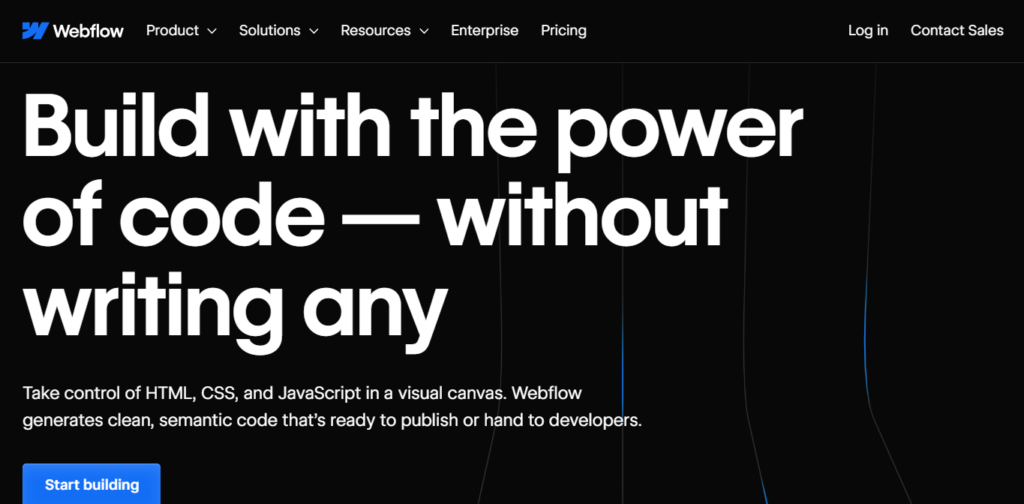
Pros:
- Extensive customization options for advanced designers.
- Free plan available; paid plans start at $14/month.
Cons:
- Not beginner-friendly; steep learning curve.
- Some SEO features may be complex for novices.
Webflow is a robust platform tailored to advanced designers, providing extensive customization options for creating visually stunning websites. With access to all features on the free plan, users can leverage advanced design tools to craft unique layouts and animations, resulting in highly customized websites. However, beginners may face a steep learning curve when navigating Webflow’s interface, as it requires familiarity with design principles and web development concepts.
Despite its complexity, Webflow offers unparalleled flexibility for designers who seek complete control over their website’s design and functionality. From customizing layouts to fine-tuning animations, users can bring their creative visions to life with precision. While the platform may not be as beginner-friendly as other options, its wealth of features and design capabilities make it a top choice for experienced designers looking to push the boundaries of web design.
- Webflow pricing: Free plan available; paid plans start at $14/month (billed annually).
Webnode
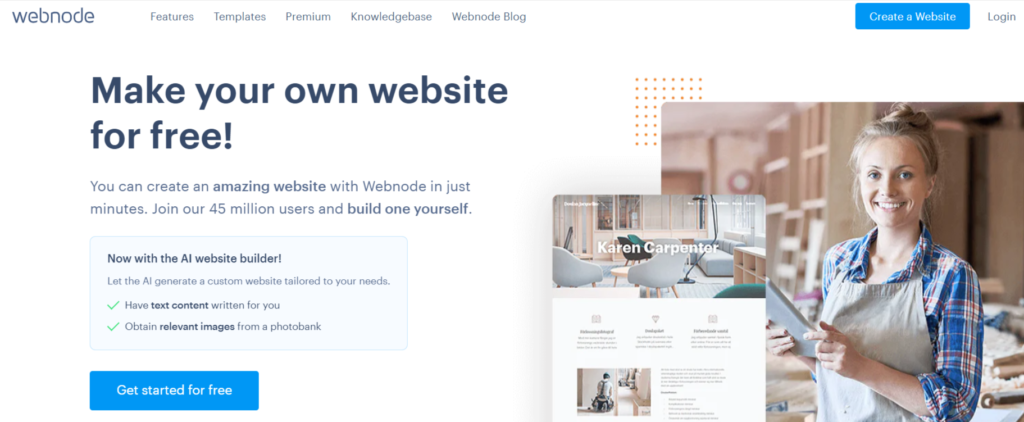
Pros:
- Clean interface with easy navigation.
- Free plan available; paid plans start at $4.50/month.
Cons:
- Some features may require upgrading.
- The free plan includes Webnode branding.
Webnode stands out as a user-friendly platform, providing individuals with the tools needed to create professional-looking websites without requiring advanced technical skills. With its diverse selection of templates and intuitive drag-and-drop editor, users can quickly customize their sites to reflect their unique style and branding. Additionally, Webnode’s AI functionality streamlines the website-building process, offering suggestions and automation to simplify the design process further.
While the free plan offered by Webnode provides excellent value by allowing users to create fully functional websites at no cost, there are limitations in terms of branding options and domain customization. Users may choose to upgrade to a paid plan to remove Webnode branding, use a custom domain for a more professional appearance, and unlock additional features and functionality. Overall, Webnode’s combination of ease of use, AI assistance, and affordable upgrade options make it a compelling choice for individuals and small businesses looking to establish an online presence.
- Webnode pricing: Free plan available; paid plans start at $4.50/month.
Wrap Up:
In summary, the landscape of free website builders in 2024 offers a diverse range of options catering to various needs and skill levels. From the simplicity of Google Sites to the advanced customization of platforms like Webflow and Webnode, there’s something for everyone. Yola, GetResponse, and Wix provide intuitive interfaces and valuable features, making them ideal for beginners and small businesses. Meanwhile, Dorik, HubSpot CMS Hub, and Webflow offer more extensive customization and SEO capabilities, appealing to experienced designers and growing enterprises. Whether you’re looking for simplicity, email-focused functionality, or advanced design options, the best free website builders in 2024 deliver impressive value and flexibility.
FAQs:
- Are free website builders truly free?
Yes, most free website builders offer a basic plan with no upfront cost. However, some may include limitations such as ads, branding, or restricted features. Be sure to review the terms and conditions of each platform to understand any potential limitations. - Can I upgrade from a free plan to a paid plan later?
Absolutely. Many free website builders offer the option to upgrade to a paid plan as your needs evolve. This typically unlocks additional features, removes branding, and provides more customization options. - Do I need coding skills to use a free website builder?
No coding skills are required for most free website builders. These platforms typically offer intuitive drag-and-drop interfaces, pre-designed templates, and simple customization options that anyone can use to create a website without writing a single line of code. - Can I use my domain name with a free website builder?
While some free website builders provide a free subdomain (e.g., yourname.buildername.com), many also offer the option to connect a custom domain (e.g., www.yourname.com) for a more professional appearance. This feature may be included in paid plans or available as an upgrade option.
- Time Difference Between India and United States - April 28, 2024
- How to Turn Off Sticky Keys on Windows 10 - April 27, 2024
- What is a Hotmail? - April 26, 2024


